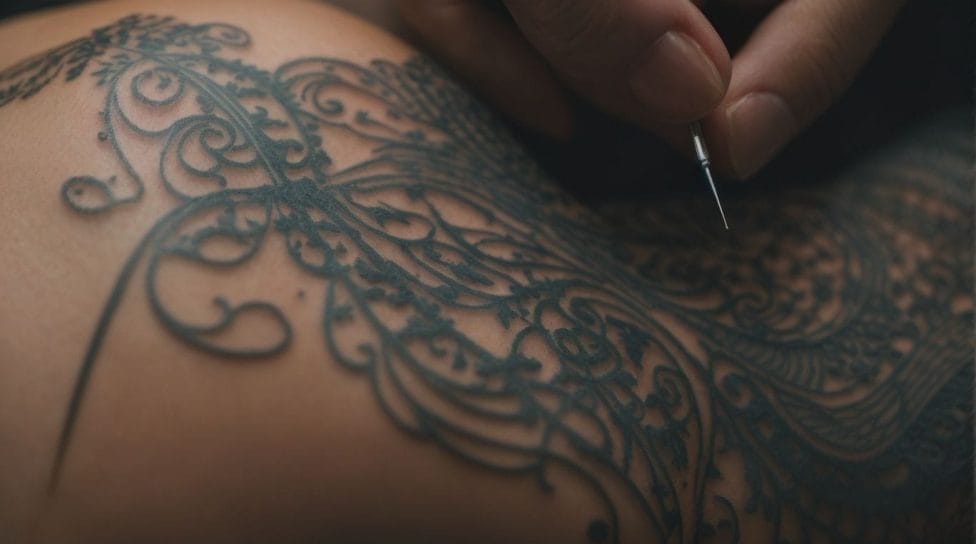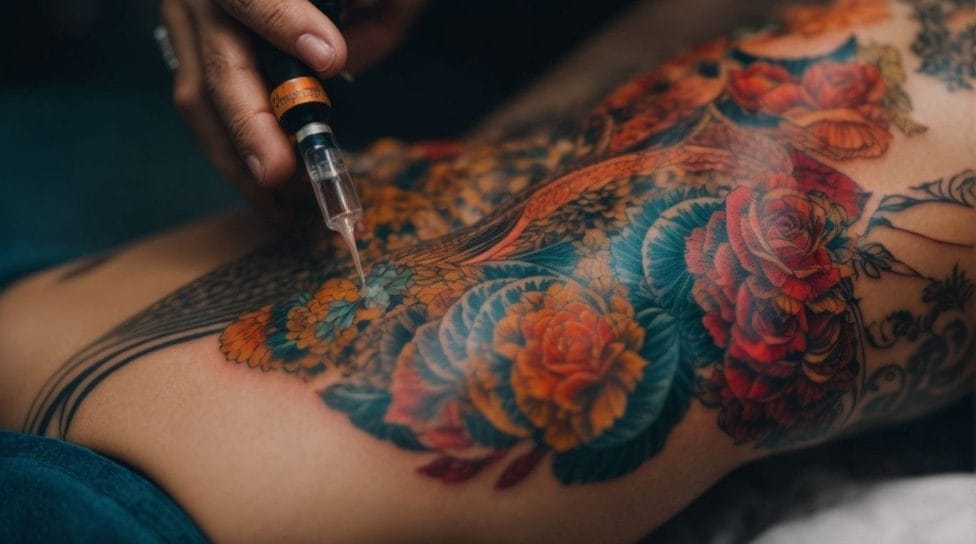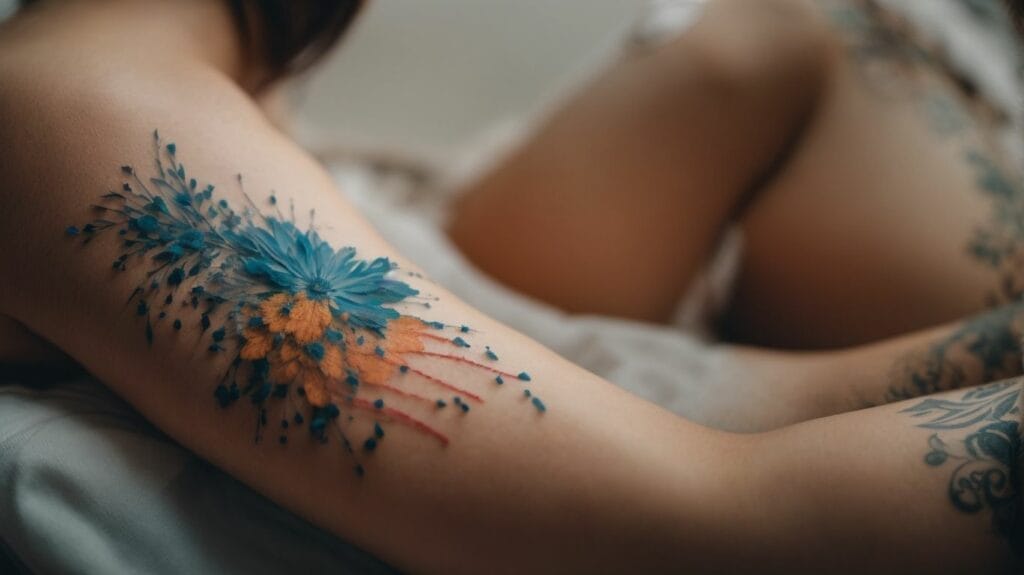Tattoos have been a form of self-expression and art for centuries, but have you ever wondered how tattoos actually work? The process of getting a tattoo involves several stages, and understanding how tattoos stay in the skin can provide valuable insight. knowing how tattoo ink works and the factors that influence their longevity and fading is important for those considering getting a tattoo. Safety is also a concern, and knowing about the potential risks and safety precautions associated with tattoos is crucial. Let’s delve into the fascinating world of tattoos and uncover the science behind them.
The process of getting a tattoo starts with preparation, including selecting a design and finding a reputable tattoo artist. Then comes the tattooing process itself, where the artist uses a tattoo machine to puncture the skin and inject ink into the dermis. Aftercare and proper healing are crucial to ensure the tattoo heals properly and maintains its quality.
Tattoos stay in the skin due to the anatomy of the skin and the role of tattoo needles. The tattoo needles penetrate the epidermis and deliver the ink into the dermis, the deeper layer of the skin. The immune system plays a role in trapping and retaining the ink particles, which results in the tattoo’s permanence.
Tattoo ink is a complex mixture of pigments, carriers, and additives. The ink particles are suspended in a carrier solution and are delivered into the skin during the tattooing process. The immune system recognizes the foreign ink particles and attempts to remove them, but most particles remain trapped, resulting in the tattoo’s visibility.
Several factors can influence the longevity and fading of tattoos. Skin type and location, tattoo design and technique, and sun exposure and UV radiation can all impact how tattoos age over time. Protecting tattoos from excessive sun exposure and taking proper care can help prolong their vibrancy.
Safety is a primary concern when it comes to tattoos. There are potential risks and complications associated with tattoos, such as infections, allergic reactions, and scarring. However, following proper safety precautions and hygiene practices, like choosing a reputable tattoo artist, using sterile equipment, and maintaining proper aftercare, can minimize these risks.
By understanding how tattoos work, staying informed about safety measures, and taking proper care of your tattoos, you can confidently enjoy the beauty and artistry of this form of self-expression.
Key takeaways:
- The process of getting a tattoo involves preparation, tattooing, and aftercare. It is important to follow proper aftercare instructions for optimal healing and to prevent infection.
- Tattoos stay in the skin because the tattoo needles inject ink into the dermis layer, which is more stable than the outer layers of skin. The immune system also plays a role in keeping the ink in place.
- Tattoo ink is composed of various pigments and carrier liquids. The tattooing process involves delivering the ink into the dermis layer, where it becomes trapped and visible through the skin.
The Process of Getting a Tattoo

Photo Credits: Tattooineplanet.Com by Matthew Adams
The Process of Getting a Tattoo
Getting a tattoo involves a specific process that requires careful consideration. Here are the steps involved in the process of getting a tattoo:
How Do Tattoos Stay in the Skin?

Photo Credits: Tattooineplanet.Com by Christian Roberts
How Do Tattoos Stay in the Skin?
The reason tattoos stay in the skin is because the ink is injected into the second layer, known as the dermis. This layer is more stable compared to the top layer of skin, which allows the ink to remain in place. In the process, the tattoo artist uses a needle to puncture the skin and deposit the ink into the dermis. As time passes, the body’s immune system attempts to eliminate the foreign ink particles, but their size prevents complete elimination. Consequently, tattoos become permanent. It is crucial to ensure proper aftercare, including avoiding direct sunlight and keeping the tattoo clean, to preserve the longevity of the tattoo.
How Does Tattoo Ink Work?

Photo Credits: Tattooineplanet.Com by Steven Walker
How Does Tattoo Ink Work?
Tattoo ink works by being injected into the dermis layer of the skin using a tattoo machine. The ink particles are too large for the body’s immune system to remove, so they remain permanently in the skin. The ink is composed of pigments, which are suspended in a carrier solution that helps evenly distribute the pigment. Once the ink is in the skin, the pigments are held in place by collagen fibers. Over time, some of the ink may break down and fade, but most of it remains visible for a lifetime.
Factors Influencing Tattoo Longevity and Fading

Photo Credits: Tattooineplanet.Com by Samuel Mitchell
Factors Influencing Tattoo Longevity and Fading
Factors that can influence the longevity and fading of tattoos encompass several aspects. Tattoo placement plays a vital role, especially when considering areas exposed to sunlight and friction, such as the hands and forearms, which may result in faster fading. Additionally, the choice of tattoo color significantly impacts the rate of fading. Certain pigments, such as blues and purples, tend to fade more rapidly compared to black or red pigments. Proper aftercare also plays a crucial role in preserving the vibrancy of a tattoo, including adequate cleaning, moisturizing, and protection from the sun. Protecting tattoos from exposure to ultraviolet (UV) rays is essential as they can cause fading over time. Therefore, it is recommended to safeguard tattoos with clothing or sunscreen. Finally, age and skin type also have a significant impact. Generally, younger skin and lighter skin tones tend to retain tattoos better and resist fading.
Are Tattoos Safe?

Photo Credits: Tattooineplanet.Com by Daniel Roberts
When considering getting a tattoo, it’s crucial to inquire, “Are tattoos safe?” The answer relies on several factors. Ensure that you select a reputable tattoo artist who adheres to proper hygiene practices, such as utilizing sterilized equipment. Make certain to adequately care for your tattoo during the healing process to avert infections. Take into account any potential allergic reactions to tattoo ink. Although tattoos can be safe when executed correctly, it’s vital to conduct thorough research and take necessary precautions.
True story: A friend of mine recently acquired a tattoo from a renowned and skilled artist. They followed all safety protocols, used sterile equipment, and provided comprehensive aftercare instructions. The tattoo healed splendidly without any complications, reaffirming the significance of choosing a safe and reputable tattoo artist.
Some Facts About How Do Tattoos Work:
- ✅ Tattoos are created by injecting ink into a person’s skin using an electrically powered tattoo machine. (Source: health.howstuffworks.com)
- ✅ Modern tattoo machines have sterilized needles, a tube system to draw ink, an electric motor, and a foot pedal to control needle movement. (Source: health.howstuffworks.com)
- ✅ The ink used in tattoos is deposited into the dermis, the second layer of skin, which is more stable than the outer layer called the epidermis. (Source: health.howstuffworks.com)
- ✅ Tattoos stay in place with minor fading and dispersion for a person’s entire life. (Source: health.howstuffworks.com)
- ✅ Tattoos have a long history dating back to ancient Egypt, initially used as body art and status symbols. (Source: thefalltattooing.com)


